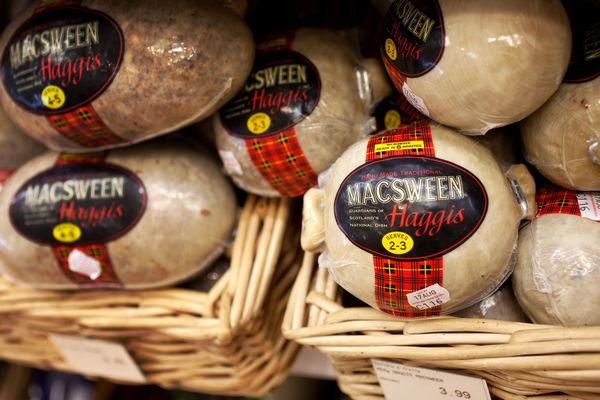Strange Food: Europe’s Offbeat Delicacies
By Rick Steves

My palate has come a long way from my "Europe through the gutter" days, when my travel diet consisted of peanut butter and strawberry jam on cheap baguettes. Now one of my favorite parts of travel is sampling local specialties. From horse meat in France to pig's ears in Spain, I make it a point to try dishes that make a place unique — no matter how strange or unappetizing they sound. Think of it as sightseeing for your palate.
How much you enjoy the food (or the experience) depends on your attitude. Remember, "weird" is subjective. Take the Dutch classic, salt-cured herring. With their seafaring heritage, the Dutch embrace this vitamin-rich food. This delicacy is something you won't forget (no matter how hard you try).
I still remember the first time I tried pickled herring. It was market day in the town of Haarlem, and I was at a herring stand — the Dutch version of a hot-dog stand. The fish looked more like bait than lunch. Sensing my hesitation, Jos, the friendly herring vendor, demonstrated how to eat it. He mimed swallowing a sword, and said, "I give you the herring Rotterdam style. You eat it like this. If I chop it up and give you these" — he pointed to the toothpicks — "this is Amsterdam style." After my first bite, the only polite comment I could muster was, "It's salty." Later, as I wandered through the market taking Amsterdam-style bites of my Rotterdam-style herring, I felt a kinship with the Dutch.
Like Dutch herring, local specialties often stem from tradition and history. It's said that Roman cooking didn't come out of emperors' or popes' kitchens, but from the cucina povera — the home cooking of the common people. This may explain the Romans' fondness for meats known as the quinto quarto (fifth quarter), such as tripe, tail, brain, and pigs' feet, as well as their interest in natural preservatives like garlic.
Haggis, Scotland's national dish, also began as peasant food. Cooks, unwilling to let any part of a sheep go to waste, would create a hearty meal by boiling scraps of heart, liver, and lungs in stomach lining. The trick to appreciating such dishes is to think of how it tastes, not what it's made of — just like with caviar or hot dogs.
Even France's foie gras, which has attracted endless controversy for the method of fattening livers by force-feeding geese, is one of the country's most expensive indulgences for a reason. The dish is most popular in the Dordogne region, where ages ago, locals caught geese on their migration — and found the goose livers were enlarged for the long journey (like traveling with a topped-off gas tank). As French are inclined to do, they ate the innards, found them extra-tasty, and decided to produce their own.
The fish capital of what is now the Czech Republic was born in the 14th century, when the nobles of Třeboň decided to transform their marshland into a collection of artificial lakes that swarmed with fish. Like the Italians do with pasta, the Czechs of Třeboň cook fish with both passion and variety. Once, I ordered all the fishy appetizers on the menu and got a tapas-style meal of dishes like cod liver, pike caviar, and something my Czech friends translated as "fried carp sperm." I said, "You can't fry sperm." But everyone at my table insisted: While female fish have a whole trough full of eggs, the males have a trough full of the male counterpart — and it's cookable. Remarkably, fried fish sperm is tasty — similar to fried oyster.
The more you travel, the more you'll find that there is a sense of pride associated with food. Most Scandinavian nations have one inedible dish that is still cherished with a perverse but patriotic sentimentality. In Norway that's lutefisk — dried cod marinated for days in lye and water. It originated during a famine and my theory is that it's now served to remind young Norwegians of their ancestors' suffering.
Meanwhile, Turks are serious about their kokoreç: chopped-up sheep intestines, often served on a sandwich as fast food. Several years ago, a rumor flew through the streets that stringent new European Union regulations would outlaw the beloved dish. Before the story was debunked, many Turks did some soul-searching and decided that if they had to choose, they'd gladly pass up EU membership for kokoreç.
Wherever you're going, sample whatever food inspires such nationalism in a culture. From geitost, the traditional goat cheese of Norway — which looks like ear wax, to the Czech Republic's stinky cheese (olomoucké tvarůžky), the unusual dishes you try will not only help you feel more like a temporary local, but may help to get you actually treated like one.

